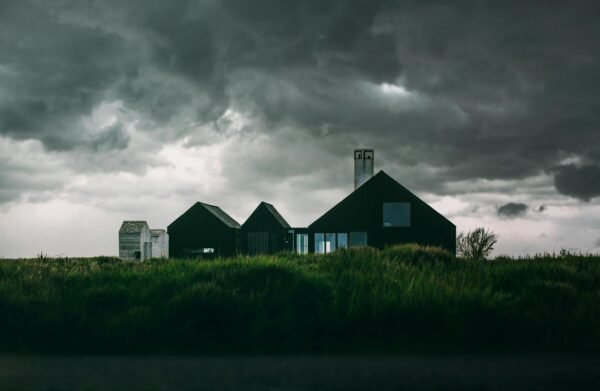
How We Should Be Investing For Every Life Stage

The older we get, the more we naturally question how salary and savings will come together to support us. While the focus is on life changing experiences such as buying a house, going travelling or starting a family, retirement is an equally important part of the mix. But how do you get started?
This week we caught up with Emma-Lou Montgomery, Associate Director at Fidelity International, to bring you some useful tips on how to start investing in your 20s, 30s, 40s and 50s.
Your 20s
You’ve left education, and you’re at the start of your career so now might not feel like the most obvious time to start investing. But you really should, because the sooner you start putting money away for the future the more you’ll have down the line.
And the good news is that if you’re employed you most probably already are saving! If you are in full-time work, you will be automatically enrolled into your workplace pension scheme upon joining. The best thing about it is that it’s essentially free money: a percentage will be deducted from your salary, your employer will contribute on top of that and you will also receive tax relief from the government. This is all then invested to build up a pension pot. To take full advantage of this, you could consider increasing your contributions, so more is invested. You might also find your employer will match this, boosting your savings even more.
However, if you also have more short-term goals, for example you want to go travelling or buy a house, you should think about saving for these goals too. While it’s important to keep a portion of your money in cash for emergencies, with low interest rates and high inflation it makes little sense to keep all of your money in cash. Instead, you should be thinking about investing it. A stocks and shares ISA can be a popular vehicle for investment – it’s more flexible than a pension so can be used to save for a number of goals and is also tax efficient. You also don’t have to have a lot of money to invest using an ISA. Work out how much you can afford to invest each month and set-up a direct debit. It doesn’t matter how small your initial contributions are, as long as you get into the habit of investing and start to grow your savings pot.
Your 30s
You’ve made it through your twenties and may be starting to think about settling down. You might have or be thinking about buying a house, getting married, or even having children. However, all these life stages cost money, so you’re going to want to be thinking about how you can invest your money to help you meet these goals more easily.
The average wedding in the UK now costs a hefty £30,555. One way that you can boost your savings for the big day is by planning ahead and investing. First you need to work out your wedding budget. This will help you know how much you need to save and for how long. For example, if you’re thinking about a £6k wedding, you could invest £5k for three years into the FTSE All Share and see your return grow to £6,244. But if your wedding is likely to be more expensive you will need to save for longer. For example, if you invested that £5k for ten years then it could grow to £14,341.
If you’re thinking about having children, even more planning may be necessary. Start budgeting and saving early particularly for when you’re on parental leave and will have a reduced household income. You’ll also want to think about whether you want to save for your child’s education and factor this in. If you want to send your child to a fee-paying school, investing your money early could assist with this. For example, if, as a parent, you invested £5,000 a year from the age of 30, and kept doing so for ten years, then with an average return of 5% per annum you could have a pot of £84,278 to spend on your child’s future.
Many parents will also want to put savings in place for their child, and the good news is that every child also has their very own ISA allowance too. Fidelity’s research found that if you were to save as little as £70 each month into a JISA from the birth of your child, they could have a savings pot worth £21,535 by the time they reach 18 years old. Alternatively, upping contributions to £90 a month during the same period would give them a pot worth £27,766 – enough to cover the cost of university tuition fees.
Lastly, don’t forget to keep saving for your own future too! It can be easy when you’re a new parent to focus on saving for your child, but your 30s are also an important saving time for you. Research part of Fidelity’s Financial Power of Women report identified maternity leave as a key moment where the gender pension gap begins to widen.
Time taken off work can mean time when you’re not saving into your pension – meaning less money in retirement. However, there are steps you can take to ensure any career break you do take doesn’t adversely affect your future retirement savings. Fidelity has found that for every two years off work you should save £4.90 a day extra into your pension when you’re back at work to close the pension gap.
Your 40s
Your children are growing up, and you’re in the middle of your career – now could be the time to make a big change. Indeed, many people looking for a better work/life balance choose to go freelance or start their own business in their 40s. According to The Association of Independent Professionals and the Self-Employed (IPSE), the average age of the solo self-employed is 46, while the average among highly skilled freelancers is 48.
However, this decision can have ramifications for your savings. For example, you won’t be auto-enrolled into a workplace pension, instead you’ll need to think about setting up your own pension or investments in order to save for your retirement. However, according to Fidelity’s Generation Self Employed report, three in ten self-employed individuals are not currently saving for the future. Opening up a self-invested personal pension (SIPP) can be a good method to save for your retirement. You can open a SIPP and drip-feed investments in from as little as £80 a month or start with a £1,000 lump sum. With a SIPP you choose where your money is invested, giving you control over your pension. You might also be able to transfer existing pensions you have into the SIPP, making it easier to see how your retirement savings are growing.
Your 50s
You are close to the finishing line and might even be thinking about when you might be able to retire, so this decade is really about boosting your pension savings and ensuring you have enough to enable your current lifestyle to continue. You’ll also want to be thinking about what you plan to do with your pension pot. So-called ‘pension freedoms’ means that from the age of 55, you can decide what they will do with your pension. You can take 25% of your pension pot as a tax-free lump sum. You could then choose to invest the rest, or you might prefer to buy an annuity which will mean a guaranteed income for life. Thinking early about how you plan to use your pension will help you prepare for this decision and ensure you are fully ready to retire in the next decade!













































